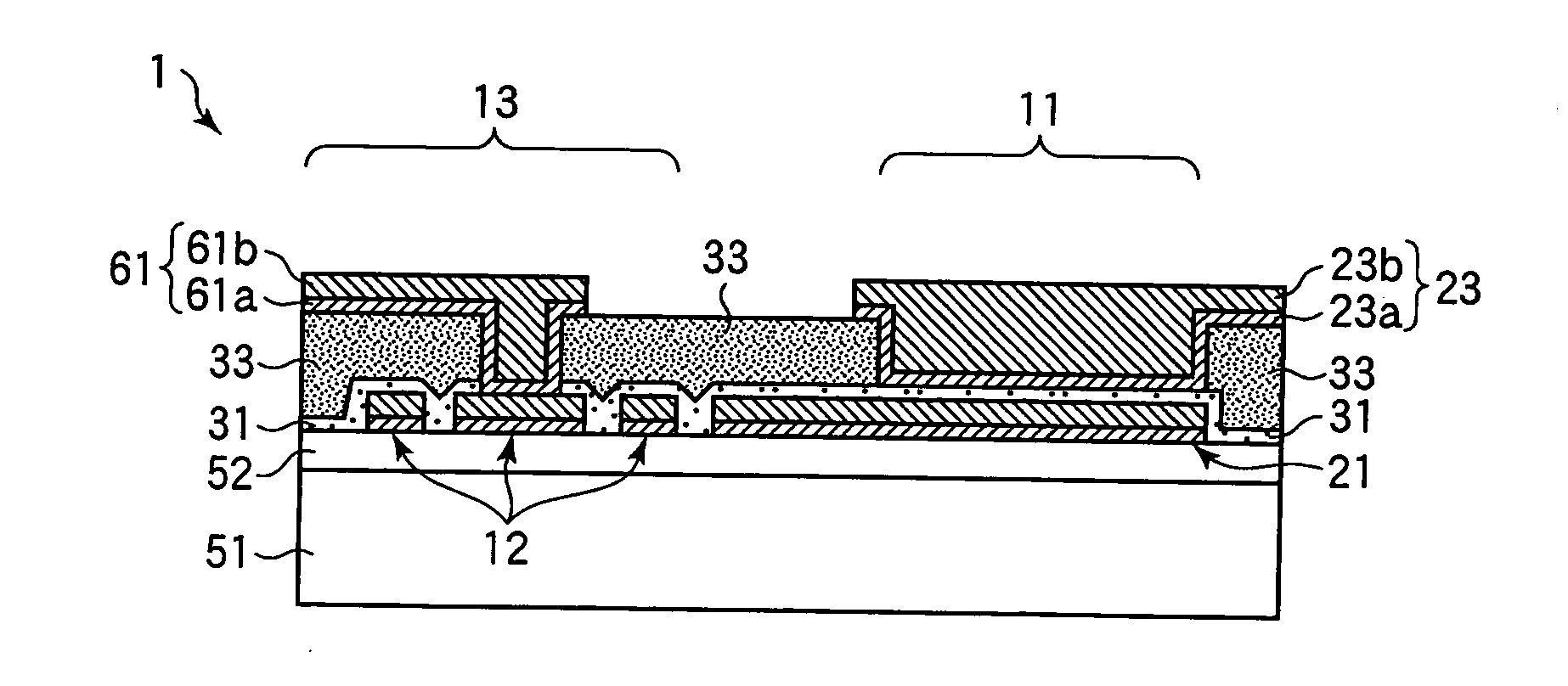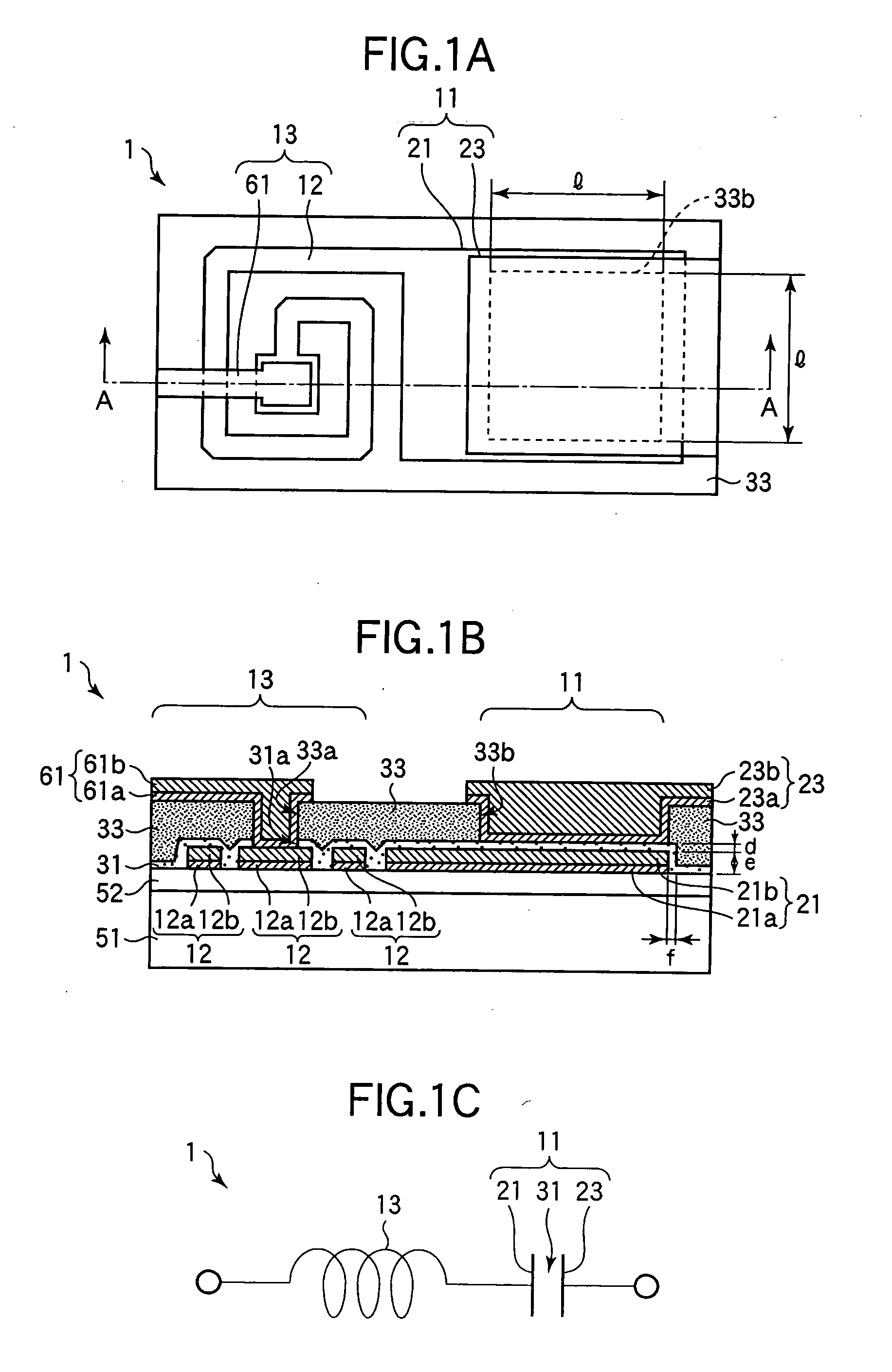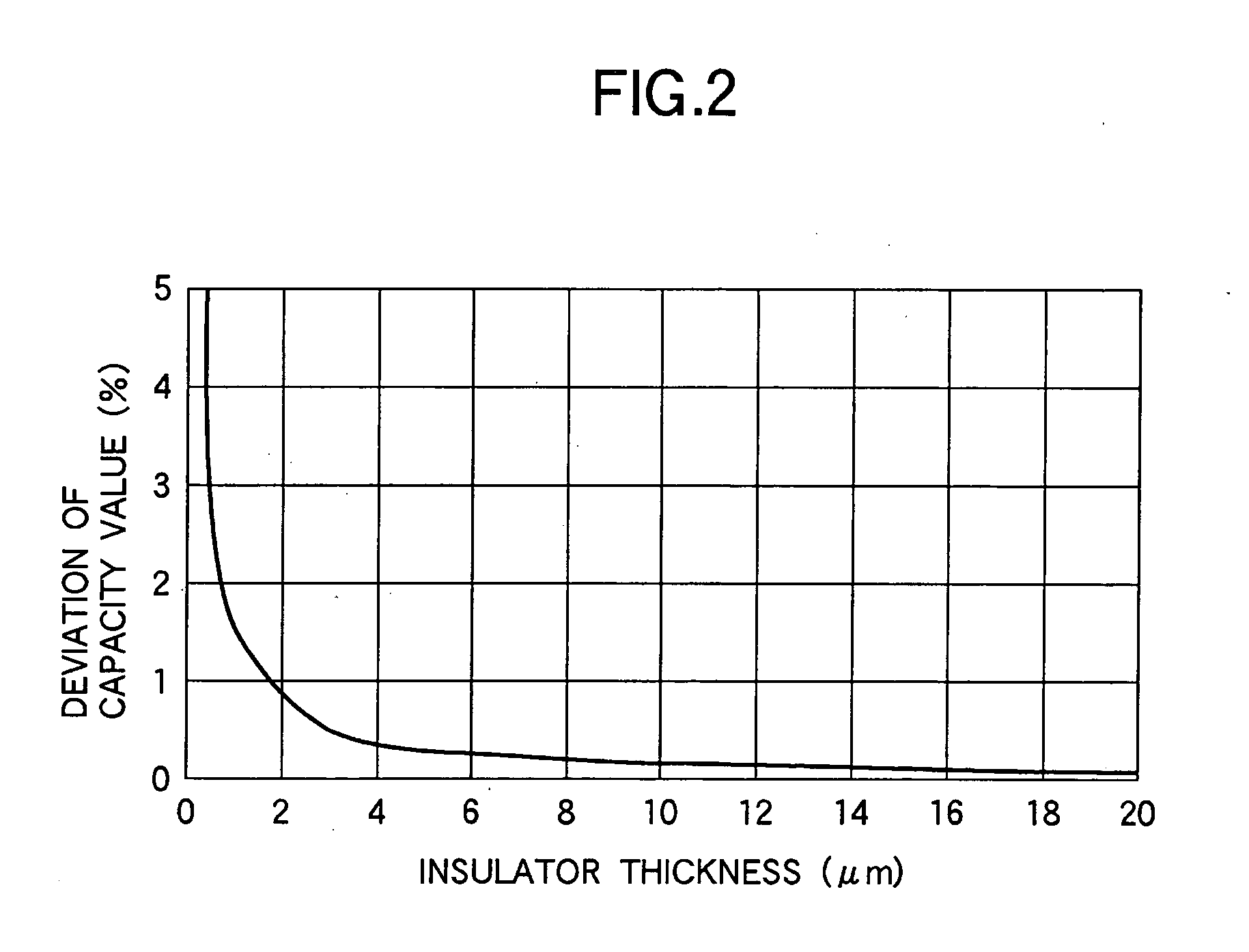Electronic component
a technology of electronic components and components, applied in the field of electronic components, can solve the problems of increasing the possibility of shorting failure, dielectric loss, and increasing the transmission loss of capacitors in the operational frequency range, and achieve the effect of preventing electromigration and accurate capacity values
- Summary
- Abstract
- Description
- Claims
- Application Information
AI Technical Summary
Benefits of technology
Problems solved by technology
Method used
Image
Examples
first embodiment
[0056] An electronic component according to a first embodiment of the invention will now be described with reference to FIGS. 1A to 10B. First, an electronic component 1 of the present embodiment will be described with reference to FIGS. 1A to 1C. FIG. 1A is a plan view of the electronic component 1, and FIG. 1B is a sectional view taken along the line A-A in FIG. 1A. FIG. 1C is an equivalent circuit diagram of the electronic component 1. In FIG. 1A, hidden lines are indicated by broken lines.
[0057] As shown in FIGS. 1A and 1B, the electronic component 1 includes a capacitor element (capacity) 11 and an inductor element (circuit element) 13 which are formed using thin-film forming techniques, and the component has a general outline in the form of a rectangular parallelepiped. Referring to FIG. 1A, the length of the longer sides of the electronic component 1 extending in the horizontal direction and the length of the shorter sides of the same extending in the vertical direction in t...
modification 1
(Modification 1)
[0113] An electronic component 2 according to Modification 1 of the present embodiment will be first described with reference to FIGS. 7A and 7B. FIG. 7A is a plan view of the electronic component 2 of the present modification showing only conductors and a dielectric film 31 constituting a capacitor element 11. FIG. 7B shows an equivalent circuit of the electronic component 2. As shown in FIG. 7A, in the electronic component 2, a part of a coil conductor 12 having a spiral shape which is located at an outer end of the conductor serves as a bottom conductor 21 of a capacitor element 11. As shown in FIG. 7B, the capacitor element 11 and an inductor element 13 are connected in series to form a series resonance circuit. Each of a lead-out conductor 61 and a top conductor 23 serves as a terminal for energization.
modification 2
(Modification 2)
[0114] An electronic component 3 according to Modification 2 of the present embodiment will be described with reference to FIGS. 8A and 8B. FIG. 8A is a plan view of the electronic component 3 of the present modification showing only conductors and a dielectric film 31 constituting a capacitor element 11. FIG. 8B is an equivalent circuit diagram of the electronic component 3. As shown in FIG. 8A, an inductor element 13 includes a coil conductor 12 having a spiral shape and a rectangular lead-out conductor 61 connected to an inner end of the coil conductor 12 and extending in the horizontal direction of the figure. The capacitor element 11 includes a rectangular bottom conductor 21 formed integrally with the coil conductor 12, connected to an outer end of the coil conductor 12, and extending in the horizontal direction of the figure and an L-shaped top conductor 23 formed integrally with the lead-out conductor 61 and provided to face the bottom conductor 21. As shown ...
PUM
 Login to View More
Login to View More Abstract
Description
Claims
Application Information
 Login to View More
Login to View More - R&D
- Intellectual Property
- Life Sciences
- Materials
- Tech Scout
- Unparalleled Data Quality
- Higher Quality Content
- 60% Fewer Hallucinations
Browse by: Latest US Patents, China's latest patents, Technical Efficacy Thesaurus, Application Domain, Technology Topic, Popular Technical Reports.
© 2025 PatSnap. All rights reserved.Legal|Privacy policy|Modern Slavery Act Transparency Statement|Sitemap|About US| Contact US: help@patsnap.com



